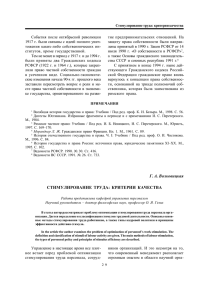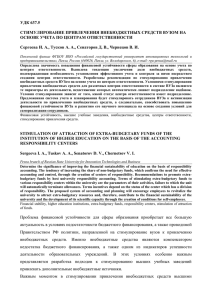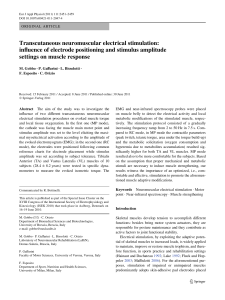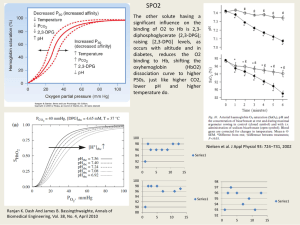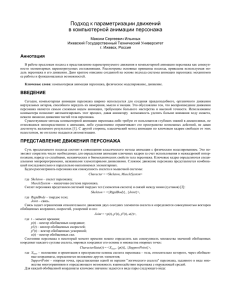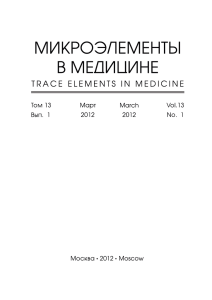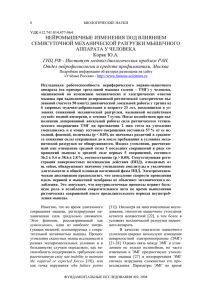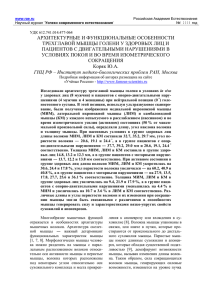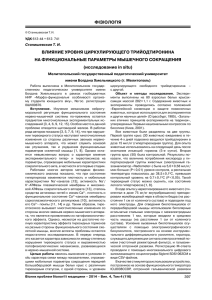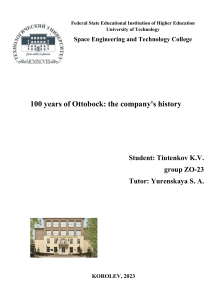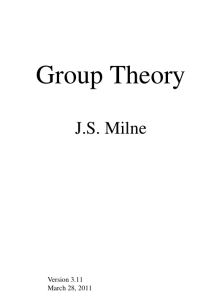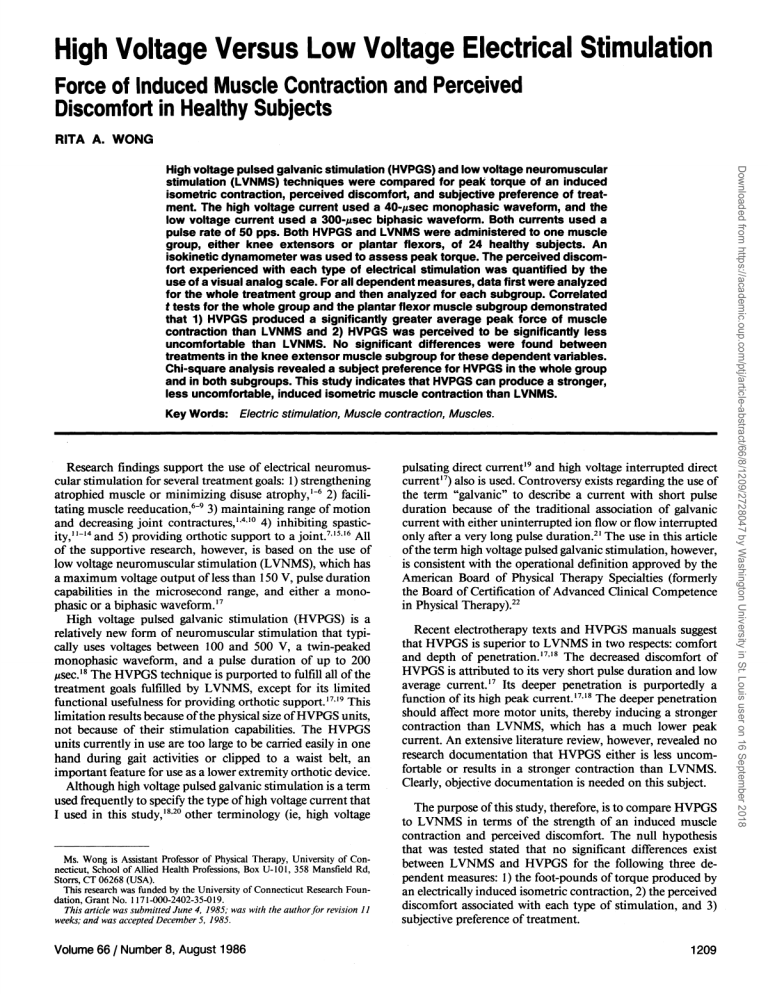
High Voltage Versus Low Voltage Electrical Stimulation Force of Induced Muscle Contraction and Perceived Discomfort in Healthy Subjects RITA A. WONG Key Words: Electric stimulation, Muscle contraction, Muscles. Research findings support the use of electrical neuromuscular stimulation for several treatment goals: 1) strengthening atrophied muscle or minimizing disuse atrophy,1-6 2) facilitating muscle reeducation,6-9 3) maintaining range of motion and decreasing joint contractures,1,4,10 4) inhibiting spasticity,11-14 and 5) providing orthotic support to a joint. 71516 All of the supportive research, however, is based on the use of low voltage neuromuscular stimulation (LVNMS), which has a maximum voltage output of less than 150 V, pulse duration capabilities in the microsecond range, and either a monophasic or a biphasic waveform. 17 High voltage pulsed galvanic stimulation (HVPGS) is a relatively new form of neuromuscular stimulation that typically uses voltages between 100 and 500 V, a twin-peaked monophasic waveform, and a pulse duration of up to 200 µsec.18 The HVPGS technique is purported to fulfill all of the treatment goals fulfilled by LVNMS, except for its limited functional usefulness for providing orthotic support.17,19 This limitation results because of the physical size of HVPGS units, not because of their stimulation capabilities. The HVPGS units currently in use are too large to be carried easily in one hand during gait activities or clipped to a waist belt, an important feature for use as a lower extremity orthotic device. Although high voltage pulsed galvanic stimulation is a term used frequently to specify the type of high voltage current that I used in this study,18,20 other terminology (ie, high voltage Ms. Wong is Assistant Professor of Physical Therapy, University of Connecticut, School of Allied Health Professions, Box U-101, 358 Mansfield Rd, Storrs, CT 06268 (USA). This research was funded by the University of Connecticut Research Foundation, Grant No. 1171-000-2402-35-019. This article was submitted June 4, 1985; was with the author for revision 11 weeks; and was accepted December 5, 1985. Volume 66 / Number 8, August 1986 pulsating direct current19 and high voltage interrupted direct current17) also is used. Controversy exists regarding the use of the term "galvanic" to describe a current with short pulse duration because of the traditional association of galvanic current with either uninterrupted ion flow or flow interrupted only after a very long pulse duration.21 The use in this article of the term high voltage pulsed galvanic stimulation, however, is consistent with the operational definition approved by the American Board of Physical Therapy Specialties (formerly the Board of Certification of Advanced Clinical Competence in Physical Therapy).22 Recent electrotherapy texts and HVPGS manuals suggest that HVPGS is superior to LVNMS in two respects: comfort and depth of penetration.17,18 The decreased discomfort of HVPGS is attributed to its very short pulse duration and low average current.17 Its deeper penetration is purportedly a function of its high peak current.17,18 The deeper penetration should affect more motor units, thereby inducing a stronger contraction than LVNMS, which has a much lower peak current. An extensive literature review, however, revealed no research documentation that HVPGS either is less uncomfortable or results in a stronger contraction than LVNMS. Clearly, objective documentation is needed on this subject. The purpose of this study, therefore, is to compare HVPGS to LVNMS in terms of the strength of an induced muscle contraction and perceived discomfort. The null hypothesis that was tested stated that no significant differences exist between LVNMS and HVPGS for the following three dependent measures: 1) the foot-pounds of torque produced by an electrically induced isometric contraction, 2) the perceived discomfort associated with each type of stimulation, and 3) subjective preference of treatment. 1209 Downloaded from https://academic.oup.com/ptj/article-abstract/66/8/1209/2728047 by Washington University in St. Louis user on 16 September 2018 High voltage pulsed galvanic stimulation (HVPGS) and low voltage neuromuscular stimulation (LVNMS) techniques were compared for peak torque of an induced isometric contraction, perceived discomfort, and subjective preference of treat­ ment. The high voltage current used a 40-µsec monophasic waveform, and the low voltage current used a 300-µsec biphasic waveform. Both currents used a pulse rate of 50 pps. Both HVPGS and LVNMS were administered to one muscle group, either knee extensors or plantar flexors, of 24 healthy subjects. An isokinetic dynamometer was used to assess peak torque. The perceived discom­ fort experienced with each type of electrical stimulation was quantified by the use of a visual analog scale. For all dependent measures, data first were analyzed for the whole treatment group and then analyzed for each subgroup. Correlated t tests for the whole group and the plantar flexor muscle subgroup demonstrated that 1) HVPGS produced a significantly greater average peak force of muscle contraction than LVNMS and 2) HVPGS was perceived to be significantly less uncomfortable than LVNMS. No significant differences were found between treatments in the knee extensor muscle subgroup for these dependent variables. Chi-square analysis revealed a subject preference for HVPGS in the whole group and in both subgroups. This study indicates that HVPGS can produce a stronger, less uncomfortable, induced isometric muscle contraction than LVNMS. METHOD Subjects Equipment and Materials I used a Respond® II neuromuscular stimulator* (Model 3128) to provide LVNMS and a Dynamax II stimulator† to provide HVPGS. The specific characteristics of the waveform used in this study are summarized in Table 1. The electrodes provided by the manufacturer of each unit were used, although they required adjustment because their sizes and shapes differed. Alon recently demonstrated that electrode size is an important factor in determining the strength of a muscle contraction.23 The LVNMS electrodes, therefore, were cut, and portions of the stimulating surfaces of the HVPGS electrodes were covered with nonconductive tape so that the stimulating surface of the rectangular LVNMS and circular HVPGS electrodes were equal in shape and size, about 40 cm2. Neuromod transcutaneous electrical nerve stimulation electrode gel* was used as the conducting medium. For the HVPGS treatment, the 500-cm2 dispersive electrode provided by the manufacturer was used. Isometric muscle contraction peak torque was measured with a Cybex® II isokinetic dynamometer‡ and recorded with a dual-channel strip chart recorder.‡ The Cybex® UpperBody-Exercise and Testing (UBXT ) table‡ and the Cybex® Super-Heavy-Duty (SHD) Exertest tablet were used to maintain the subject's right lower extremity in the desired testing position. At the beginning of each testing day, the dynamometer was calibrated according to the manufacturer's instructions.24 The perceived pain intensity associated with the use of each form of electrical stimulation was evaluated with a visual analog scale (VAS), a 10-cm horizontal line with distinct 1cm demarcations at each end. The left end of the line represented "no pain at all" and the right end represented "the worst pain imaginable." The procedures for using this scale are described in the next section. The reliability and validity of this scale for evaluating the subjective perception of pain intensity is well documented.25-27 Price et al have validated the use of ratio-level comparisons with the VAS.25 Procedures Each subject was treated twice, usually on consecutive days. During each treatment visit, the subjects received HVPGS and LVNMS, sequentially and randomly, using the device settings summarized in Table 1. Additionally, the subjects were divided randomly into two subgroups: all testing was * Medtronic, Inc, Neuro Division, 6951 Central Ave NE, PO Box 1250, Minneapolis, MN 55440. † J A Preston Corp, 60 Page Rd, Clifton, NJ 07012. ‡ Cybex, Div of Lumex, Inc, 2100 Smithtown Ave, Ronkonkoma, NY 11779. 1210 Stimulation Characteristic Pulse rate Duty cyclea Rampb Intensity Pulse duration Waveform HVPGS LVNMS 50 pps 10 sec on, 10 sec off 2sec subject's maximum tolerance 40 µsec twin-peaked monophasic 50 pps 10 sec on, 10 sec off 2 sec subject's maximum tolerance 300 µsec asymmetrical bi­ phasic a Length of each "on" and "off" time period of an interrupted current. Length of time for current to rise gradually to preset intensity at the beginning of each on portion of the duty cycle. b performed on the knee extensor muscles of the 10 subjects in one subgroup, and all testing was performed on the plantar flexor muscles of the 12 subjects in the other subgroup. Two muscle groups were tested to ensure that the results obtained were not simply a function of one particular muscle group. Immediately before the first treatment session began, two electrode placement points were located using the following techniques. With a 2-pps stimulation, the hand probe of the HVPGS unit was moved slowly over the anterior thigh or calf (dependent on subgroup assignment) until the two points yielding the greatest contraction of the assigned muscle group, with the least co-contraction of the surrounding muscles, were located. These points were marked with ink and, if necessary, excessive hair was removed from them. One treatment electrode was then attached to each of these two treatment sites using electrode gel and skin-tape patches in preparation for the first treatment session. For the HVPGS treatment, an additional large dispersive electrode was placed on the subject's mid-to-low back area. During the first treatment visit, perceived discomfort and subjective preference of treatment were measured using the following procedures. The subjects received two random sixminute treatments, one with HVPGS and one with LVNMS. During the first four minutes of each treatment, the intensity of the current was increased gradually to each individual's subjective maximum-tolerance level. The subjects were instructed: The intensity will be increased slowly until you request that it be stopped. I would like you to allow the intensity to be increased until you reach the level you consider to be your "maximum" tolerance. The stimulation will be cycling on and off at 10-sec intervals for six minutes in total. The sensation should be strong but bearable. Each subject told the investigator when to stop increasing the intensity (ie, when the sensation was too uncomfortable). No attempt was made to encourage the subjects to accept or reject more current than they requested. Immediately after the first six-minute stimulation session, the subjects were shown a VAS and were read the following directions: The far left-hand side of this line represents "no pain at all"; the farright-handside of this line represents "the worst pain imaginable." Consider the discomfort you felt from this treatment. Place a mark at the point on the line that you believe represents the amount of discomfort you felt during this treatment. PHYSICAL THERAPY Downloaded from https://academic.oup.com/ptj/article-abstract/66/8/1209/2728047 by Washington University in St. Louis user on 16 September 2018 Twenty-four subjects (9 men and 15 women) between 19 and 35 years of age ( = 24 years) and with no known neurological or orthopedic dysfunction affecting the right lower extremity participated in this study. The subjects refrained from vigorous exercise for two hours before testing. This study was approved by the institutional research review committee. The subjects signed informed consent forms before participation. TABLE 1 Electrical Characteristics of the High Voltage Pulsed Galvanic Stimulation (HVPGS) and Low Voltage Neuromuscular Stimulation (LVNMS) RESEARCH TABLE 2 Peak Induced Torque and Visual Analog Scale (VAS) Values for High Voltage Pulsed Galvanic Stimulation (HVPGS) and Low Voltage Neuromuscular Stimulation (LVNMS) Data Analysis LVNMS HVPGS proper force transmission through the footplate. The Cybex® II procedural manual notes that during voluntary plantar flexion the intrinsic muscles of the foot contract to hold the foot firmly against the footplate.24 During pilot testing, we noted that the electrically induced plantar flexion contraction was not accompanied by contraction of the intrinsic muscles of the foot, thus, allowing the heel to lift off of the footplate when standard procedures were implemented. Additional stabilization, therefore, was provided to maintain proper foot contact with the footplate. The subject's right foot was covered with a sock and then placed into a heel cup molded to fit over the back of the footplate. The molded heel cup held the foot in about 16 degrees of inversion. The subject's right foot and ankle then were taped and strapped securely to the footplate. Care was taken not to tape over the Achilles tendon. The ankle was positioned in 5 to 7 degrees of plantar flexion and the speed selector was set at 0°/sec. The same stimulation points, electrical characteristics (Tab. 1), and method of administering the treatments that were used during the first treatment visit also were used during the second treatment visit. During the first four minutes of treatment, the current intensity was increased slowly during the "on" portion of the duty cycle to the maximum level tolerated by the subject. The subjects were told that the sensation should be "as strong as you can tolerate for a 10-minute period of time. You are to relax and let the machine do the work." The HVPGS treatment and the LVNMS treatment each required 10 minutes to complete and were spaced 20 minutes apart. The dynamometer's recorder was set at a speed of 5 mm/sec throughout each 10-minute testing session. In all instances, the same investigator applied the electrodes, controlled the intensity, and gave the instructions to the subject. Subject Subgroup Torque (ft∙lba) VAS (cm) Torque (ft∙lb) VAS (cm) 1 2 3 4 5 6 7 8 9 10 11 12 13 14 15 16 17 18 19 20 21 22 Eb Eb E E E E E E E E Pc P P P P P P P P P P P 5.8 4.8 13.5 12.2 7.0 12.9 0.0 8.9 3.2 14.7 15.0 14.9 24.6 11.6 15.3 8.0 21.8 9.6 10.8 25.7 22.6 1.6 12.0 7.1 2.2 1.0 2.5 3.0 1.5 0.7 5.1 1.7 0.0 0.6 0.6 0.6 0.1 6.7 3.0 0.2 1.6 1.0 0.8 0.5 3.0 3.1 1.8 1.7 10.4 2.0 0.6 3.4 1.8 7.2 5.2 7.9 0.1 14.4 23.8 13.3 17.7 7.0 14.2 0.6 10.0 7.1 7.1 20.8 13.8 0.5 8.5 6.9 3.0 1.9 3.3 4.2 2.5 1.8 1.8 2.6 0.0 1.6 4.4 3.9 1.8 7.5 2.0 0.0 2.3 0.4 3.9 1.2 2.9 4.9 2.6 1.7 Using the Statistical Package for the Social Sciences, I used a two-tailed correlated Student's t test to analyze the mean values and the standard deviations from the means for two of the dependent measures: perceived discomfort and peak torque. Perceived discomfort values were calculated by measuring the distance, in centimeters, from the left margin (zero point) of the VAS to the subject's marking (subjective perception of pain intensity) using a standard metric ruler. For the data analysis, peak torque was defined as the average of the peak isometric forces produced during each 10-second on cycle between minute 6 and minute 10 during the peak torque assessment. The peak torque during each on cycle was determined from the strip chart recording using the Cybex® 11 chart data card‡ to calculate the stylus deflection from the baseline. Treatment preference was analyzed using the chisquare statistical test.29 RESULTS 1 ft∙lb = 1.356 N∙m. E = knee extensor muscle subgroup. c P = plantar flexor muscle subgroup. Two subjects were excluded from the data analysis. One subject, although having no known neurological or orthopedic dysfunction, demonstrated normal sensory and motor responses to LVNMS but exhibited no motor response and very little sensory response to HVPGS, even though the current intensity was increased to its highest point (ie, 500 V). This pattern of response was suggestive of early peripheral neuropathy. Further inquiry revealed that this subject was an insulindependent diabetic, and subsequent evaluation by a neurolo- Volume 66 / Number 8, August 1986 1211 s a b Downloaded from https://academic.oup.com/ptj/article-abstract/66/8/1209/2728047 by Washington University in St. Louis user on 16 September 2018 The subjects then marked the scale. The same treatment procedures were performed then using the second stimulator with the electrodes attached to the same stimulation points. Immediately after this second treatment session, the directions for using the VAS were repeated. The subjects then marked a second VAS without seeing their first scale marking. At the end of the first treatment visit, after both types of stimulation had been applied, the subjects were asked to choose one of the following three statements: 1) preferred treatment one, 2) preferred treatment two, or 3) no preference. This completed the first treatment visit. The purpose of the second treatment visit, usually conducted the next day, was to determine the average peak force of isometric contractions produced by HVPGS and LVNMS. For this treatment visit, the subjects were positioned according to the following descriptions. Joint angle position was assessed with a standard universal goniometer using bony landmarks identified by Cole and Tobis.28 Knee extensor muscle subgroup. Each subject was seated on the SHD table according to the manufacturer's guidelines and stabilized with thigh and pelvic straps.24 The knee was placed at 25 to 30 degrees of flexion and the speed selector was set at 0°/sec. Plantar flexor muscle subgroup. Each subject was positioned prone on the UBXT according to the manufacturer's guidelines, with additional foot-and-ankle stabilizations for TABLE 3 Average Visual Analog Scale Values After High Voltage Pulsed Galvanic Stimulation (HVPGS) and Low Voltage Neuromuscular Stimulation (LVNMS) for All Subjects and Two Subgroups Group Whole group (N = 22) Plantar flexor muscle subgroup (n = 12) Knee extensor muscle subgroup (n = 10) a HVPGS (cm) LVNMS (cm) s s t Pa 1.8 1.7 2.6 1.7 2.44 .02 1.9 1.9 2.9 2.1 2.3 .04 1.8 1.5 2.3 1.1 1.05 NS significant at p < .05. TABLE 4 Average Peak Torque Values During High Voltage Pulsed Galvanic Stimulation (HVPGS) and Low Voltage Neuromuscular Stimulation (LVNMS) for All Subjects and Two Subgroups Group Whole group (N = 22) Plantar flexor muscle subgroup (n = 12) Knee extensor muscle subgroup (n = 10) a b 1 ft.lb = 1.356 N.m. Significant at p < . 05. 1212 HVPGS (ft.lba) LVNMS (ft.lb) s s t Pb 12.0 7.1 8.5 6.9 3.08 .006 15.1 7.4 11.3 7.3 2.55 .03 8.3 4.9 5.3 4.7 1.70 NS TABLE 5 Summary of Chi-Square Analysis of Subject Preference for Either High Voltage Pulsed Galvanic Stimulation (HVPGS) or Low Voltage Neuromuscular Stimulation (LVNMS) for All Subjects and Two Subgroups Subjects Whole group (N = 22) Plantar flexor muscle subgroup (n = 12) Knee extensor muscle subgroup (n = 10) Preferred HVPGS Preferred LVNMS No Preference SS Oa Eb O E O E 18 7.33 2 7.33 2 7.33 23.29c 9 4.0 1 4.0 2 4.0 9.5d 9 3.3 1 3.3 0 3.3 14.75a a Observed. Expected = number of subjects in sample group divided by three (number of possible choices). c p<.005. b d e p<.01. p<.005. DISCUSSION For the whole group and the plantar flexor muscle subgroup, the findings of this study support the theoretical assumptions that HVPGS can produce a stronger muscle contraction and is less uncomfortable than LVNMS. The knee extensor muscle subgroup, however, did not demonstrate significant differences in either peak torque or perceived discomfort. The reason for thisfindingis unclear. One possible explanation may be that the final sample size (n = 10) of the knee extensor muscle subgroup was too small. Another possible explanation may be that proximal structures contain fewer sensory receptors than do distal structures.30 An individual, therefore, may be less able to discriminate between subtle differences in painful stimuli when they are applied to the thigh, rather than to the calf. This diminished sensory capability could result in less divergent values for perceived discomfort. Because the maximum intensity of current applied to the muscle groups for each type of electrical stimulation was based on perceived discomfort (ie, each subject determined when the sensation became intolerable), less divergence also could be expected between induced torque values for the knee extensor muscle subgroup. The data summarized in Table 2 support the latter explanation. The divergence between the HVPGS and LVNMS values for the subjects in the knee extensor muscle subgroup were less pronounced than for the subjects in the plantar flexor muscle subgroup, although the responses of both subgroups were similar. This finding raises a potentially important question regarding limitations of the ability to generalize electrical stimulation research findings from one muscle group to another, especially when perceived discomfort is a factor. The subjective preference data demonstrated that the majority of the subjects in both subgroups preferred the sensation of HVPGS over LVNMS. This is an important finding, especially when combined with the fact that a stronger conPHYSICAL THERAPY Downloaded from https://academic.oup.com/ptj/article-abstract/66/8/1209/2728047 by Washington University in St. Louis user on 16 September 2018 gist confirmed that a mild peripheral neuropathic condition did exist in his lower extremities. A second subject was excluded from the data analysis because the electrically induced muscle force recorded on the subject's strip chart may have been contaminated with voluntarily induced force. In all of the other subjects, a clear distinction was recorded between the "off" cycle (ie, stylus returns to baseline) and the on cycle (ie, stylus deflects from baseline). The recorded muscle force was almost constant when this subject was tested. Short bursts of high peak torques that did not appear to be related to electrical stimulation also were present. The total number of subjects included in the data analysis, therefore, was 22. Table 2 lists the VAS values and peak torque values of each subject. Table 3 summarizes the results of the correlated t-test analysis for the VAS values, and Table 4 summarizes the results of the correlated t-test analysis for the peak torque values. The HVPGS technique was found to be significantly less uncomfortable than LVNMS for the group as a whole (p < .02) and for the plantar flexor subgroup (p < .04). The HVPGS technique resulted in a significantly stronger muscle contraction than did LVNMS for the group as a whole (p < .006) and for the plantar flexor muscle subgroup (p < .03). No significant differences were found in the VAS or peak torque values for the knee extensor muscle subgroup. The results of the chi-square analysis for subject preference are summarized in Table 5. The group as a whole and both subgroups preferred HVPGS over LVNMS. RESEARCH Volume 66 / Number 8, August 1986 Elapsed Time (min) Figure. Average peak torque induced by high voltage pulsed galvanic stimulation (HVPGS) and low voltage neuromuscular stimulation (LVNMS) for the whole group, recorded at 1-minute intervals between minutes 5 and 10 of the peak torque assessment session. rounding muscles. Contraction of stabilizing or antagonistic muscles simultaneously with that of the agonistic muscles (knee extensors or plantar flexors) would result in more than one force vector active at the joint being tested; therefore, the force being transmitted through the dynamometer would reflect the agonistic forces minus all opposing forces, not the agonistic forces alone. Despite careful electrode placement, some subjects experienced palpable contractions of surrounding muscles during the electrical stimulation that became more pronounced as the intensity was increased. These cocontractions were more common in the knee extensor muscle subgroup than in the plantar flexor muscle subgroup. This study demonstrates that further research is needed in several related areas: 1. Although "typical" electrical characteristics were used, the use of these electrical stimulators at different frequencies, pulse widths, duty cycles, or waveforms may result in dissimilar findings. Further studies using other electrical characteristics are needed. 2. Although this study documented the initial responses of subjects to HVPGS and LVNMS, it did not assess responses that may result with increased exposure to those types of electrical stimulators. Replications of this study based on additional electrical stimulation sessions conducted before the assessment of induced torque and perceived discomfort values, thus allowing the subjects to adjust to the electrical stimulation experience, might yield useful data. This format also might result in documentation to support or refute the hypothesis that subjects are able to tolerate increased levels of current as they become more familiar with the treatment procedures and equipment. 3. Replications of this study using subjects with various diseases or limitations are needed to determine whether factors such as preexisting painful conditions or muscle atrophy will suppon or refute the findings of this study. 4. This study suggests that the magnitude of the response to electrical stimulation for both perceived discomfort and 1213 Downloaded from https://academic.oup.com/ptj/article-abstract/66/8/1209/2728047 by Washington University in St. Louis user on 16 September 2018 traction generally was associated with HVPGS. Patient tolerance and acceptance are important considerations in the effective application of electrical stimulation. This finding justifies the need for further investigation of the clinical applicability of HVPGS. Two interesting findings of this study are the relatively low perceived discomfort and peak torque values. The perceived discomfort values (Tab. 3), indeed, are lower than might be expected considering that the subjects were instructed to allow the current to be increased to the highest tolerable level. That this study assessed each subject's perceived discomfort during the initial exposure to electrical stimulation probably is the major reason for the relatively low perceived discomfort values. In my experience, many individuals initially are fearful of having electricity used on them. This fear' may result in subjects initially limiting their tolerance of electrical current to a level that they consider to be "safe." Indeed, the electrotherapy literature advises that the patients' fear of electricity must be overcome for the current to be increased sufficiently for effective treatment.17,21,31 The use of the VAS, a measure of pain intensity rather than of the emotional components of the pain experience, during a subject's initial electrical stimulation treatment session may identify any hesitancy that may exist to tolerate the maximum level of pain intensity.27 The relatively low peak torque values in this study probably are related to the following procedures that were implemented to ensure maximal consistency in the application of HVPGS and LVNMS: 1. Relatively small electrodes were used. Alon has demonstrated that large electrodes result in significantly greater induced torque values than do small electrodes.23 2. Only two electrodes were used. Benton et al described application techniques using both two and three electrodes for both the knee extensor and plantar flexor muscle groups.21 They reported that three electrodes usually will induce a stronger muscle contraction than two electrodes when applied to either the knee extensor or plantar flexor muscles. 3. The assessment of peak torque was performed after only one previous application of each type of electrical stimulation when the subjects' fear of electricity probably was still a factor in their acceptance of the electrical stimulation treatments. 4. The intensity of the current was increased only during the first 4 minutes of the 10-minute treatment session. Several subjects commented that they probably could have tolerated more current toward the end of the 10-minute treatment session. Those subjects possibly accommodated gradually to the electrical stimulus; that is, the nerve became less responsive when activated by this repetitive stimulus.31 This gradual accommodation would result in lower sensory and motor responses.21 Indeed, average torque values decreased slightly between minute 5 and minute 10, as depicted in the Figure. Although fatigue cannot be eliminated as a possible explanation for the decrease in torque values over time, it is an unlikely possibility. The low torque values, combined with the brief stimulation period (10minute on-off cycling treatment), are not consistent with the rapid fatigue of normal muscle.21 Accommodation is a more likely explanation. Another possible explanation for the low torque recordings is that co-contractions were induced electrically in the sur- peak torque may differ based on the muscle group being tested. This factor should be investigated further. 5. Further investigation is needed into the validity of dynamometry to measure maximum muscle force generated by a given muscle during an electrically induced contraction. CONCLUSIONS REFERENCES 1. Munsat TL, McNeal DR, Waters RL: Preliminary observations on prolonged stimulation of peripheral nerve in man. Arch Neurol 33:608-617, 1976 2. Peckham PH, Mortimer JT, Marsolais EB: Alteration in the force and fatigability of skeletal muscle in quadriplegic humans following exercise induced by chronic electrical stimulation. Clin Orthop 114:326-334, 1976 3. Merletti R, Zelaschi F, Latella D, et al: A control study of muscle force recovery in hemiparetic patients during treatment with functional electrical stimulation. Scand J RehabH Med 10:147-154, 1978 4. Winchester P, Montgomery J, Bowman BR, et al: Effects of feedback stimulation training and cyclical electrical stimulation on knee extension in hemiparetic patients. Phys Ther 63:1096-1103, 1983 5. Fournier A, Goldberg M, Green B, et al: A medical evaluation of the effects of computer-assisted muscle stimulation in paraplegic patients. Orthopedics 7:1129-1133, 1984 6. Baker LL, Parker K, Sanderson D: Neuromuscular electrical stimulation for the head-injured patient. Phys Ther 63:1967-1974, 1983 7. Liberson WT, Holmquest HJ, Scott D, et al: Functional electrotherapy: Stimulation of the peroneal nerve synchronized with the swing phase of gait of hemiplegic patients. Arch Phys Med Rehabil 42:101-105, 1961 8. Waters RL, McNeal DR, Perry J: Experimental correction of footdrop by electrical stimulation of the peroneal nerve. J Bone Joint Surg [Am] 57:1047-1054,1975 9. Bowman BR, Baker LL, Waters RL: Positional feedback and electrical stimulation: An automated treatment for the hemiplegic wrist. Arch Phys Med Rehabil 60:497-502, 1979 10. Baker LL, Yeh C, Wilson D, et al: Electrical stimulation of the wrist and fingers for hemiplegic patients. Phys Ther 59:1495-1499, 1979 11. Mooney V, Wileman W, McNeal DR: Stimulator reduces spastic activity. JAMA 207:2199-2200, 1969 12. Liberson WT: Experiment concerning reciprocal inhibition of antagonists elicited by electrical stimulation of agonists in a normal individual. Am J Phys Med 44:306-308, 1965 13. Dimitrijevic MR, Nathan PW: Studies of spasticity in man: 5. Dishabituation of the flexion reflex in spinal man. Brain 94:77-90, 1971 14. Fulbright JS: Electrical stimulation to reduce chronic toe-flexor hypertonicity. Phys Ther 64:523-525, 1984 15. Malezic M, Stanic U, Kljajic M, et al: Multichannel electrical stimulation of gait in motor-disabled patients. Orthopedics 7:1187-1195, 1984 1214 16. Griethuysen CM, Day GA: Biomechanical analysis of patient using FES peroneal brace and further developments. Orthopedics 7:1196-1200, 1984 17. Wolf SL (ed): Electrotherapy. New York, NY, Churchill Livingstone Inc. 1981, pp 14-22 18. Newton RA: Electrotherapeutic Treatment: Selecting Appropriate Waveform Characteristics. Clifton, NJ, J A Preston Corp, 1984 19. Alon G: High Voltage Stimulation (High Voltage Pulsating Direct Current). Chattanooga, TN, Chattanooga Corp, 1984 20. Newton RA, Karselis TC: Skin pH following high voltage pulsed galvanic stimulation. Phys Ther 63:1593-1596, 1983 21. Benton LA, Baker LL, Bowman BR, et al: Functional Electrical Stimulation: A Practical Clinical Guide, ed 2. Downey, CA, Rancho Los Amigos Rehabilitation Engineering Center, 1981, pp 72-73, 88-97 22. Physical Therapy Advanced Clinical Competencies: Clinical Electrophysiology. Chapel Hill, NC, Clinical Electrophysiotogy Specialty Council, Board for Certification of Advanced Clinical Competence, 1984 23. Alon G: High voltage stimulation: Effects of electrode size on basic excitatory responses. Phys Ther 65:890-895, 1985 24. Isolated-Joint Testing and Exercise: A Handbook For Using Cybex® II and UBXT. Ronkonkoma, NY, Cybex, Div of Lumex, Inc. 1981, pp 67-70, 7376 25. Price D, McGrath P, Rafii A, et al: The validation of visual analog scales as ratio scale measures for chronic and experimental pain. Pain 17:45-56, 1983 26. Revill S, Robinson J, Rosen M, et al: The reliability of a linear analog for evaluating pain. Anaesthesia 31:1191-1198, 1976 27. Ohnhaus E, Adler R: Methodological problems in the measurement of pain: A comparison between the verbal rating scale and the visual analog scale. Pain 1:379-384, 1975 28. Cole TM, Tobis JS: Measurement of musculoskeletal function. In Kottke FJ, Stillwell GK, Lehmann JS (eds): Krusen's Handbook of Physical Medicine and Rehabilitation, ed 3. Philadelphia, PA, W B Saunders Co, 1982, pp 30-31 29. Duncan RC, Knapp RG, Miller MC: Introductory Biostatistics for the Health Sciences. New York, NY, John Wiley & Sons Inc. 1977, pp 139-142 30. Williams PL, Warwick R: Functional Neuroanatomy of Man. Philadelphia, PA, W B Saunders Co, 1976, pp 1164-1165 31. Mannheimer JS, Lampe GN: Clinical Transcutaneous Electrical Nerve Stimulation. Philadelphia, PA, F A Davis Co, 1984, p 221 PHYSICAL THERAPY Downloaded from https://academic.oup.com/ptj/article-abstract/66/8/1209/2728047 by Washington University in St. Louis user on 16 September 2018 Within the limitations of this study, the following conclusions may be stated: 1. The HVPGS technique induced a stronger isometric muscle contraction than did LVNMS, one that was more pronounced during plantar flexion than during knee extension. 2. The HVPGS technique was perceived by subjects to be significantly less uncomfortable than LVNMS. Relatively less discomfort also was experienced during plantar flexion than during knee extension. 3. The HVPGS technique was preferred by subjects significantly more often than LVNMS.
